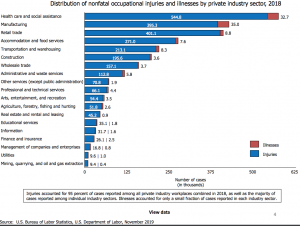While we’re still wrapping our heads around COVID19, it is increasingly clear the pandemic will have implications for the workers’ comp industry that are deep and broad.
Perhaps the most important is the change in claim type.
Historically, 95% of workers’ comp claims were injury-related.

That’s about to change.
While still in flux, the number of states where workers in specific industries that contract COVID19 will be covered by workers’ compensation has hit the double digits, with more considering legislation every day.
Multiple states including IL, CA, KY, AL, WI, MN, NY, NJ, UT, PA, and OH have either adopted broader interpretations of presumption via executive order or legislation or are considering pending legislation. First responders, health care workers, employees of grocery stores and child care centers are examples of workers whose COVID19 infections may be presumed to be occupationally-based (different states include different professions).
Couple that with a national infection count that will almost certainly increase as testing finally appears to be ramping up, and the result will be a lot more disease-based claims.
At the same time, the national shut-down is drastically reducing the number of new injury-based claims – while keeping past claims open longer than normal because patients can’t access care, have their cases adjudicated and/or don’t have jobs to return to.
Everything claims-related has been oriented around injuries; claims intake, medical guidelines, investigation and compensability determination, network physicians and ancillary providers, clinical oversight, bill review, disability rating and determination.
With COVID19 claims certain to become more and more prevalent, the entire workers’ comp ecosystem will have to adapt, and do so rapidly.
Meanwhile, employers and insurers must find ways to get current patients into providers to get treated, get evaluated, and get better. While many have begun to adopt telemedicine, those efforts must be exponentially increased.
With the dramatic drop-off in new injuries, payers should be using claims staff’s down time to connect patients with providers, get telerehab started, schedule appointments out in the future so their patients are first in line when in-person care is back on line.
What does this mean for you?
Seven weeks into this, it’s time to plan for the new reality.


